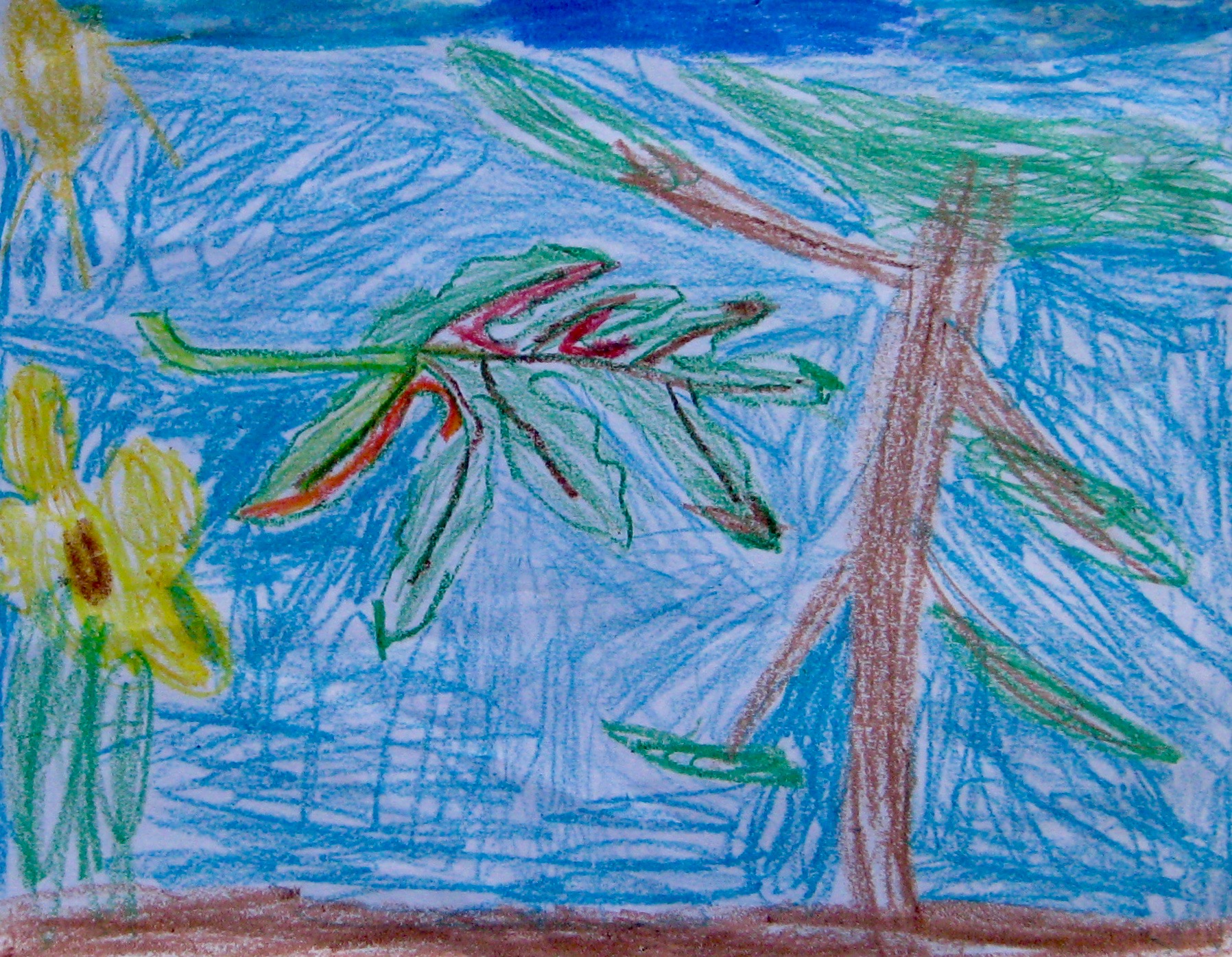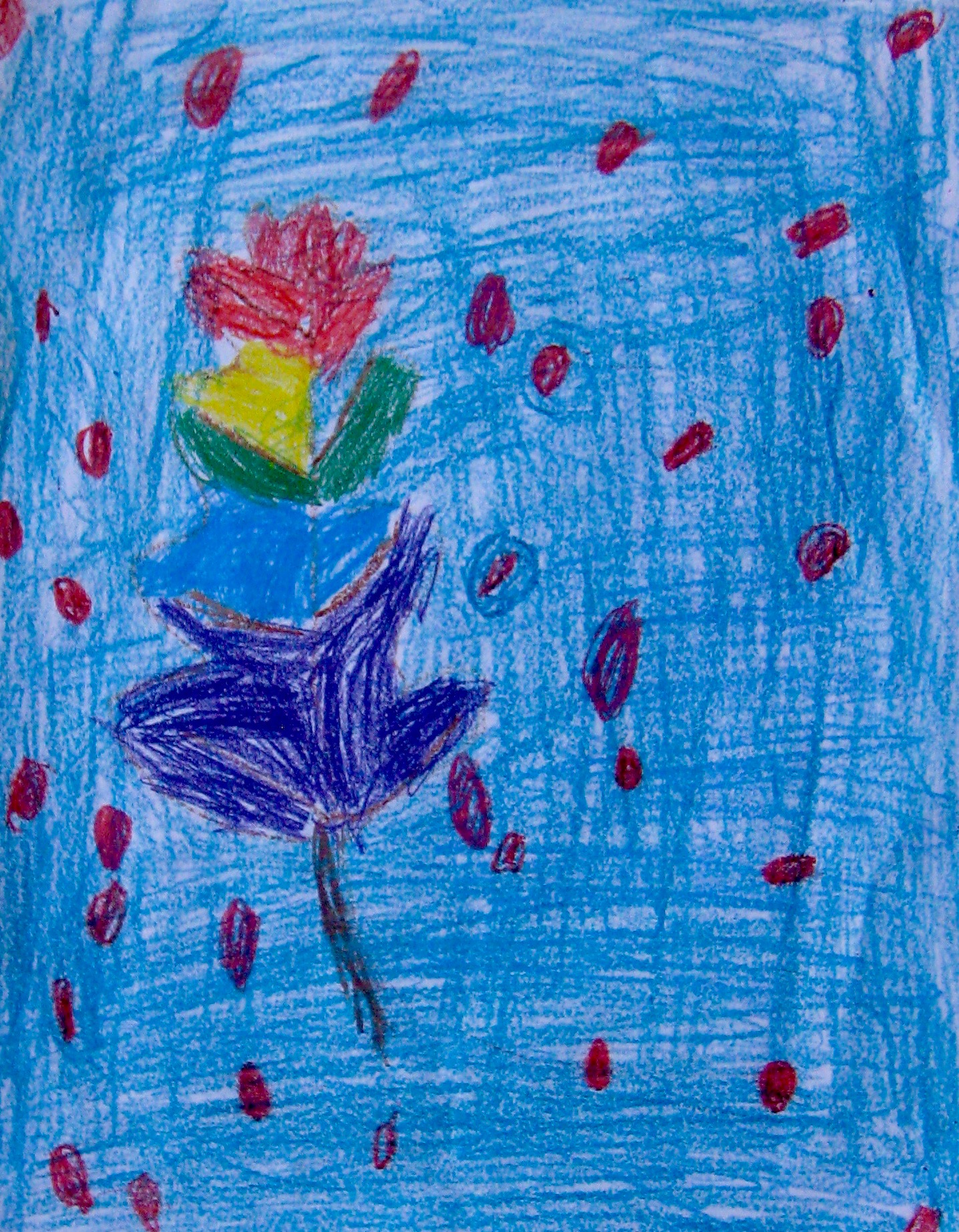Fall Leaf Drawings
Crayon and Colored Pencil Sticks on 5 1/2 x 11 white copy paper
With all the hot weather last week it's easy to forget that over a week ago we officially entered the fall season. But all I have to do is look out my window at the Liquid Amber tree in my neighbor's yard to be reminded that the season is turning along with the bright fall colors of the leaves. In preparation for the annual show of fall color, second grade students have been exploring leaves in art. Students have examined the leaf structure, in particular the branching structure of the veins, have observed and drawn realistic silk leaves, have practiced drawing leaves using the vein structure as a starting point and next week will be completing a painting inspired by the branching vein structure.
For the drawing assignment featured in this post, students were given a realistic silk leaf to use as a starter to their drawings. (See the end of this post for more about the starter strategy.)
Below are examples of the variety of ways students approached completing this assignment. Because I structured the observation of the leaf as a starter, students could make any changes to the leaf at any point in the drawing--my only requirements were that students fill the entire page and show a background of their choice. I also encouraged them to think about if they could show any other details in the background that could tell the story of where the leaf is.
Second grade families, this is a great time to ask your second grade student about leaves. Find a few leaves and ask your child how those 'real' leaves are the same and how they are different from the silk leaves in art class. Examine the leaves together and find the veins--look at how the veins make a branching structure. Also look at the edges, how some are smooth, some are bumpy, some have lobes and some have points. Finally, invite your child to draw leaves at home, from imagination and from observation.
The leaf drawings below are examples of students who focused on carefully observing the leaf and recording the colors and shapes they saw.
This set of leaves show students who used a one color background and applied the color vigorously and with pressure to the crayon--the bold color really makes the leaves 'pop'!
These five drawings show students who imagined and drew the tree the leaf might have come from.
These leaf drawings show other ideas students had for backgrounds. It's interesting to see how some students used abstract designs, others thought about the environment a leaf might be in, one student imagined a leaf tower and another envisioned the first page of a book of leaves.
The leaves below are examples of student who worked on making changes to the leaf.
The Starter Strategy:
With the starter strategy in this observational drawing assignment, students practiced:
- beginning an art-creating experience by going directly to the source (in this case, leaves) to observe the subject in multiple sketching sessions
- incorporating their own ideas, primarily in the background of their sketches as they draw
- making changes to the subject at any point during the drawing session
- applying the Art Expectations:
Is My Drawing Is Done?
- Use three or more colors
- Fill the paper
- Show details
- Show the background and what the subject is sitting on or, if it is in the air, how is it staying in the air
- If outside, show the time of day or night and the weather
What to Do if I Make a Mistake
- First try to draw over it or turn it into something else
- Next, turn the paper over or get a new paper
- Never crumple the 'mistake', just set it aside






























